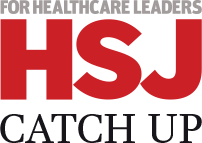David Beeson offers various tactics to keep care costs down by giving patients the most appropriate treatment
The NHS faces its greatest challenge: to improve quality of care while saving money. This isdespite increasing pressures created by an ageing population and growth in patients suffering long-term conditions.
The annual cost to the NHS of chronic obstructive pulmonary disease alone is estimated at more £800m for direct healthcare costs. But how much of this could be avoided and what impact would this have on patient experience and NHS spending?
‘One admission might have been avoided with closer observation in the community’
Commissioners are now in prime position to work this out. By reviewing charges made by providers quickly, they can identify specific items to refer back to them and challenge the charges made for inappropriate healthcare expenditure.
Identifying what is inappropriate
How do you identify what is inappropriate and avoidable? Consider, for example, two admissions for COPD with neither non-invasive ventilation nor intubation:
- Patient 1: Woman of 58, in hospital for two nights. Tariff: £1,968.31
- Patient 2: Man of 60, in hospital for three nights. Tariff: £1,968.31
The tariff is the same for both cases because the healthcare resource group is the same. Without further information it is difficult to decide whether either could have been avoided.
A GP or practice manager, working under pressure to review cases for possible challenges, might well accept the charges for both without query. If, for example, they were concentrating on reviewing only cases where the tariff was more than £2,500, they might well not look at either of them at all.
But if we examine what other care has been delivered to both patients, an interesting pattern begins to emerge. To do this we need to link patient records, covering as many care settings as possible, to build a clearer picture of the whole patient journey for each patient.
Linking patient data
To examine these cases, the patients’ records can be linked across three care settings: A&E, outpatient and inpatient care. Linking other data sets, such as primary and social care, would add even more detail to give a more complete understanding.
Even with this relatively limited number of datasets, it is clear that the two patient journeys were very different. For patient 1:
- Ten months before her hospital admission, she had an outpatient appointment with an allied healthcare professional.
- On the day of the admission, she attended A&E.
- She was then admitted for her two-night stay.
The admission might have been avoided with closer observation in the community, but there may not have been enough evidence to suggest that this was necessary.
Now let’s look at patient 2:
- The records show that he had previously been admitted for COPD two years ago.
- Over the following 12 months he had six attendances as an outpatient and another COPD hospital admission, for two nights.
- Six months later he had two further COPD admissions within three weeks of each other, one lasting three nights and the others for two.
- Another outpatient attendance occurred before a further COPD admission two months later.
- There were three more outpatient attendances over the next two months and another COPD admission, lasting four nights, after the patient attended A&E.
- Finally, he attended another clinic before being admitted three weeks later, via A&E, for the COPD admission we are investigating.
For patient 2, at least two of these admissions could be identified as readmissions (emergency admissions within 30 days of a previous discharge) and should not attract a charge.
Excluding those cases, the treatment of this patient over two years still cost more than £15,000. Even if the tariffs for the readmissions are removed, the costs were incurred by the health service as a whole, which has a detrimental impact on the acute trust’s income.
Taking only the chargeable costs into account, the commissioners could have saved more than a quarter of the cost: nearly £4,000 over two years. From the point of view of the GP practice, being able to make this kind of saving on individual patients with long term conditions has a significant impact on budgets. From the point of view of the patient, the sequence of eight admissions over two years represents significant disruption to his life as well as considerable discomfort.
Avoidable admissions
Often, COPD admissions are avoidable. By keeping patients under observation in the community, simply by talking to them on the telephone, it is possible to intervene when symptoms appear and put in place the appropriate drug treatment early enough to avoid admission.
With a home supply of antibiotics, the patient can treat themselves. Supported by a community respiratory nurse, a patient’s treatment can be backed up by courses of oral steroids. The patient could also be encouraged to make records which can then be monitored and reviewed by the community nurse.
None of this is cheap, but it is arguably significantly more cost effective that admission to hospital.
‘With greater insight delivered through better information, commissioners could be more proactive in spotting the opportunities for savings and better outcomes’
Without clinical investigation, it is difficult to say with certainty that the savings and potential improvement to the patient’s experience could have been made. But, at the very least, there is a clear indication that it should be investigated.
With greater insight delivered through better information, commissioners could be more proactive in spotting the opportunities for savings and better outcomes. It may have been possible to identify this kind of patient as worth monitoring closely, well before the admission took place, using risk stratification.
The combined predictive model, the standard risk stratification tool used in the NHS, uses primary or secondary care data, or both, to identify those patients most likely to need some form of early intervention.
What does it show for patient 2? The patient has a risk score of 70.61 per cent. That puts him in a group of 318 across the whole of this particular CCG area. A monitoring regime for that number of patients should not be unfeasibly difficult to put in place. If it led to a saving of as little as £2,000 for each of these patients per year, we would be talking about more than £600,000 from this initiative alone.
An individual GP may only see one or two such patients, and so it would not seem useful to investigate further. But across the CCG – and this example has only 30 GP practices – the 33 patients identified are significant and the cost-saving potential is large.
David Beeson is product manager at MedeAnalytics



























No comments yet